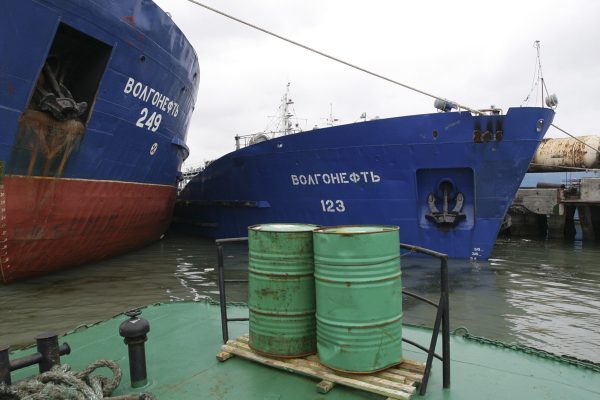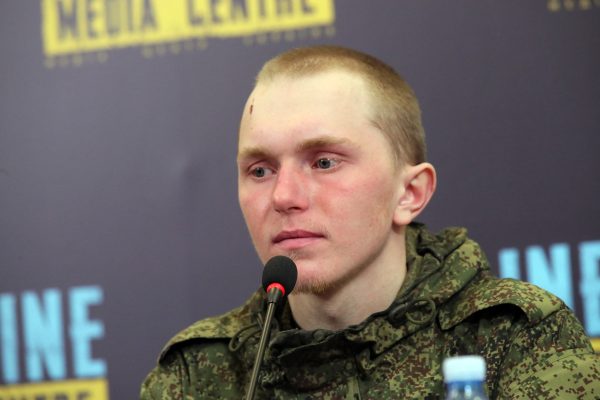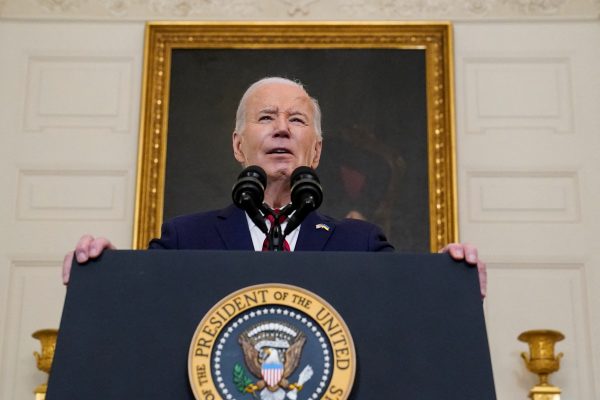Finland, despite its status as the newest NATO member, is in a better condition than most of the other 28 European alliance members. Empty stockpiles and slow armaments production are causing concern elsewhere in Europe, but not so in Finland.
The Finnish Defense Forces (FDF) received extra funding for procurement and immediately issued new contracts in the spring of 2022, not long after Russia’s full-scale invasion and before other countries woke up to the issue. As a result, the country’s stockpiles have been filling to such an extent that more warehouse capacity is needed.
This year, the FDF will also conduct logistics exercises and activate so-called production reserve agreements with civilian companies that keep extra capacity in place for the defense forces’ needs in crisis and war — akin to a war economy lite. In this pre-conflict period, sufficient availability and production capacity of everything from food supplies to machinery is tested with sustained warfighting in mind, as seen in Ukraine.
Finland’s efforts to maintain an efficient national defense capability are motivated by sheer proximity to Russia and a history of aggression from the east. Similar reasoning explains other countries in the Nordic-Baltic region likewise increased their preparedness levels over the past two years.
The Baltic states have signed several joint procurement deals for key weapons systems such as HIMARS and ATACMS. Other joint Baltic initiatives include the Livonian air shield, a Latvian-Estonian joint procurement of IRIS-T air defense systems, and the Baltic Defense Line to jointly reinforce the shared border with Russia and increase the capability to block and slow enemy movement.
Latvia reintroduced conscription as of 1 July 2023, while Lithuania did so in 2015 and Estonia has had conscription in place since the 1990s. All three Baltic states are well on their way to reaching 3% of GDP in defense spending in the coming years, 50% greater than the NATO requirement.
The Nordic countries have also been taking steps to both individually and jointly increase domestic production of ammunition and other military equipment.
Finland is working on more than doubling its artillery ammunition production, which will make it one of Europe’s largest producers. Denmark, Finland, Norway, and Sweden recently signed an agreement within the NORDEFCO framework to jointly increase ammunition production; which is designed to increase the region’s security of supply and to ensure long-term support for Ukraine.
Together with funding from the European Union’s Act in Support of Ammunition Production (ASAP) program, the Swedish Defense Materiel Administration signed a contract with Norwegian-Finnish ammunition producer Nammo to increase its production capacity of 155mm shells.
Soon-to-be NATO member Sweden will reach NATO’s 2% defense spending goal this year, two years ahead of the 2022 plan. Apart from increased defense industrial production, Sweden has also been reinstating its Cold War-era readiness systems: partial military conscription was reintroduced in 2017, as well as civilian service in January for roles such as the emergency services and the energy sector. This forms part of Sweden’s “total defense duty” that applies to all residents between the ages of 16-70.
Sweden has also promised to send a 600 troops to the multinational battalion in Latvia’s Forward Land Force once Hungary ratifies Sweden’s NATO membership.
It is clear that Finland and Sweden‘s NATO membership makes the alliance better able to respond to the Russian threat than ever before, even if most European NATO allies are still far behind the Northern members’ readiness levels.
Finland’s more than 800-mile-long border with Russia has doubled the total length of the NATO-Russia border, which caused some alarm ahead of its accession. But Finland offers significant military capabilities, causing a major headache for Russia.
The addition of Finland and Sweden (which seems certain this year) has made planning and executing Baltic defense much easier – previously, there have been questions about NATO’s ability to reinforce the Baltic states.
Simply by having kept its national defense capabilities at a high level, Finland fields a military force that Russian planners have to reckon with. These include a wartime troop strength of 280,000, reserves of up to 870,000, one of Europe’s largest artillery forces and recent investments into long-range fires, and a capable air force that will soon phase out the F/A-18 Hornet for 64 new F-35s.
Add to the mix the close cooperation of the Nordic air forces, constituting a combined fleet of some 250 jets, as well as Finnish-Swedish naval cooperation, and Russia’s room for maneuver is significantly limited compared to pre-2022. The Cooperation Agreements (DCA) that Finland and Sweden both recently signed with the United States further boost the deterrence in the region.
Thanks to growing Nordic-Baltic cooperation, and their outsize contribution to Ukraine’s defense (the region accounts for eight of the top 11 contributors by share of GDP), a region that was NATO’s Achilles heel until this decade is now one of the alliance’s most well-prepared and capable. It is united by a shared threat perception and willingness to do what is needed.
Other European allies need to do the same. The opportunity to deter Russia is now, using the time that Ukraine has provided for the rest of Europe.
Minna Ålander is a research fellow at the Finnish Institute of International Affairs (FIIA) in Helsinki. Her research topics are Northern European security and Nordic defense cooperation, as well as German and Finnish foreign and security policy.
Europe’s Edge is CEPA’s online journal covering critical topics on the foreign policy docket across Europe and North America. All opinions are those of the author and do not necessarily represent the position or views of the institutions they represent or the Center for European Policy Analysis.





